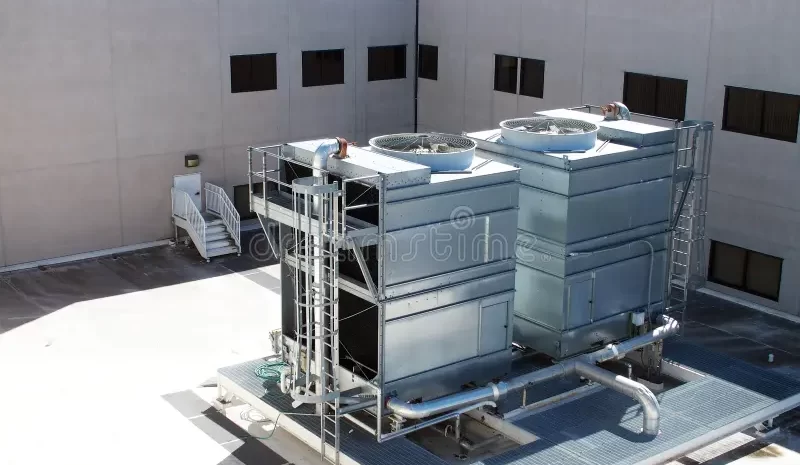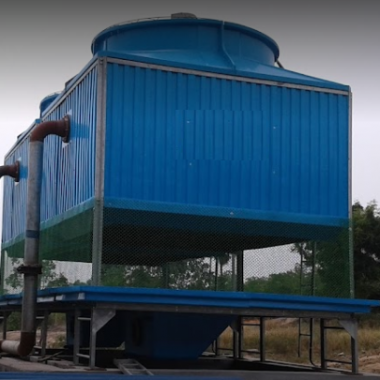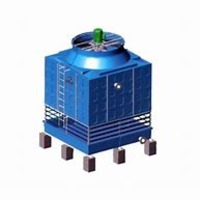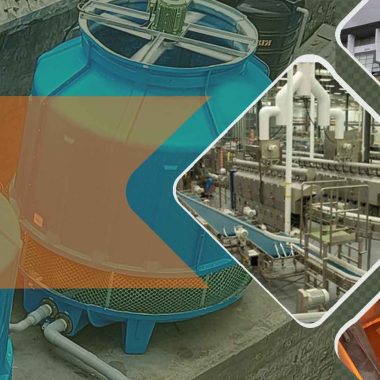Economics of Cooling Towers
Introduction
Economics of Cooling Towers revolves around evaluating the costs, benefits, and return on investment (ROI) of these critical systems used in industrial and commercial settings. Cooling towers are essential for dissipating heat in various processes, from HVAC systems to power plants. The economic considerations include initial capital expenditure, operating costs like energy and water consumption, and maintenance expenses. Additionally, factors such as material durability, energy efficiency, and water treatment can greatly influence long-term savings and ROI.
Factors in Cost Analysis:
- Initial Capital Costs:
- Purchasing a cooling tower involves upfront expenses, including equipment costs, installation fees, and any required structural modifications.
- The type of cooling tower (open-loop, closed-loop, or hybrid) affects the capital cost. Open-loop systems are typically more affordable initially but may have higher long-term maintenance needs.
- Operating Costs:
- Energy Consumption: Fan motors, pumps, and water treatment systems contribute to ongoing electricity costs. More energy-efficient designs, such as optimized fan systems, can reduce this expense.
- Water Usage: Water consumption is a significant operational cost. Open cooling towers, in particular, may have higher water usage due to evaporation and drift, leading to higher water bills.
- Maintenance and Repairs: Regular maintenance, cleaning, and repairs are essential to keep the tower functioning efficiently and extend its lifespan. The cost of downtime should also be considered if the system fails. Economics of Cooling Towers
- Environmental Compliance Costs:
- In some regions, cooling towers are subject to environmental regulations, including water discharge, drift control, and chemical usage. Compliance with these regulations may require additional investment in water treatment technologies or drift eliminators.
- Life Cycle Costs:
- The total cost of ownership over the lifespan of a cooling tower includes capital costs, operating costs, and maintenance. The longer the cooling tower lasts, the better the return on investment (ROI). Proper maintenance can significantly extend the life of a cooling tower, often up to 20 years or more.
ROI Considerations
- Energy Efficiency Improvements:
- Investing in energy-efficient cooling towers or retrofitting older systems with advanced technology, such as variable speed fans, can significantly reduce energy consumption and operating costs, leading to a quicker payback period.
- Water Savings:
- Systems designed to minimize water usage or employ water reuse technologies offer long-term savings, particularly in regions with high water costs or scarcity. Closed-loop cooling towers, for example, use less water than open systems.
- Increased Uptime and Productivity:
- High-performance cooling towers with minimal downtime can improve process efficiency, leading to higher productivity and profitability. Choosing reliable equipment reduces the risk of expensive outages.
- Environmental Incentives:
- Some governments offer tax credits, rebates, or financial incentives for businesses that invest in energy-efficient or environmentally friendly cooling technologies. Taking advantage of these programs can reduce the effective cost of the system and improve ROI.
Additional Points
Material Selection and Longevity:
The materials used in the construction of a cooling tower, such as fiberglass, stainless steel, or galvanized steel, affect both the initial cost and the long-term durability. Higher-grade materials may have a higher upfront cost but typically offer greater resistance to corrosion and longer operational life, reducing the need for frequent replacements.
Automation and Control Systems:
Implementing automated control systems can optimize cooling tower performance by adjusting fan speed, water flow, and chemical treatment based on real-time conditions. This can lead to energy savings, lower operating costs, and a quicker return on investment.
Retrofitting Existing Systems:
For businesses with older cooling towers, retrofitting with modern components like variable frequency drives (VFDs) or high-efficiency motors can improve performance and reduce energy costs without the need for a full replacement, offering a cost-effective way to enhance ROI.
Impact of Climate and Location:
Local climate conditions play a critical role in the cooling tower’s efficiency and operating costs. In regions with high ambient temperatures, cooling towers may require more energy to maintain desired temperatures. Conversely, in cooler climates, energy and water savings are more easily achieved, enhancing ROI.
Water Treatment and Chemical Costs:
Cooling towers require water treatment to prevent scaling, corrosion, and biological growth. The cost of water treatment chemicals and systems can be significant over time, and investing in effective treatment systems can reduce long-term chemical expenses, extending equipment life and improving overall system efficiency.
Conclusion
evaluating the economics of cooling towers is crucial for optimizing both performance and cost efficiency. A well-planned investment in energy-efficient designs, sustainable materials, and advanced technologies can lead to significant savings over time. While initial costs may be higher, factors such as reduced energy consumption, lower maintenance needs, and extended equipment lifespan contribute to a positive return on investment (ROI). Businesses that prioritize these aspects will benefit from more reliable cooling systems, lower operational costs, and enhanced sustainability, making cooling towers an economically viable solution for long-term industrial and commercial applications.





